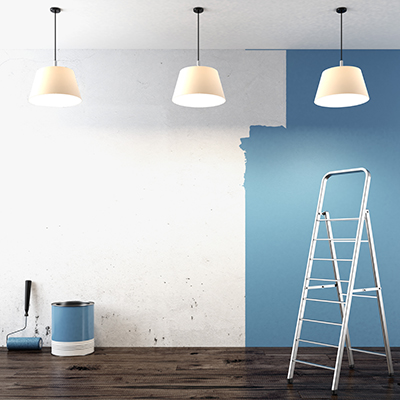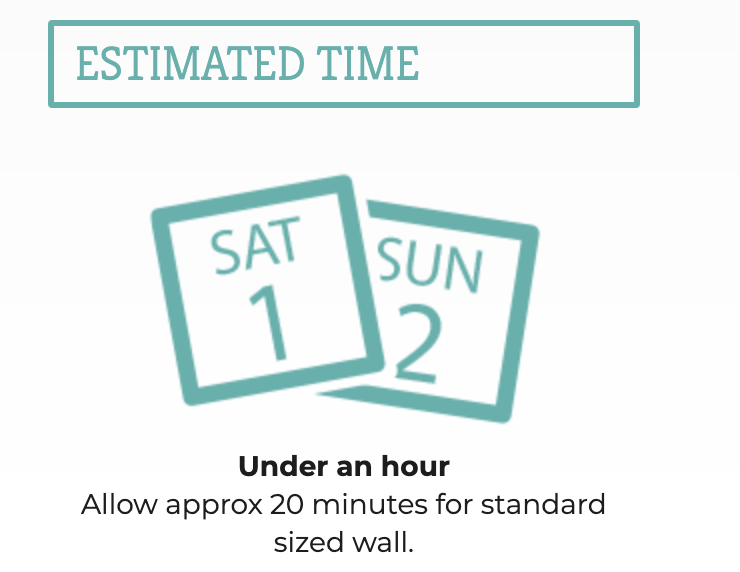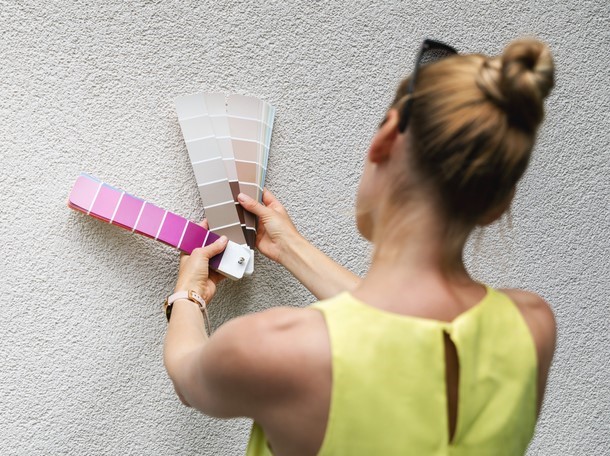
Painting a wall in any room or space can dramatically change the look or feel.
Selecting the right colour and using a high quality interior wall paint will ensure professional looking results and a longer lasting finish.

Under an hour
Allow approx 20 minutes for standard sized wall.
MATERIALS
Here’s what you’re going to need:
- Interior wall paint*
- Canvas drop cloths
- Painter’s masking tape
- Angled paint brush
- Roller Frame 230 or 270mm width
- 9-12mm nap roller cover (matching frame width)
- Paint tray (matching frame width)
* We estimate you’ll need 2L of paint to cover an average sized wall. We recommend using a low sheen paint…
STEPS
- Determine the paint colour for your wall. Remember to consider colours you have selected for doors, trim and ceilings when making your choice.
- Determine the quantity of paint required for the area you will be painting.
- Before you begin, make sure you prepare the wall for painting to achieve the best finish.
- Place drop cloths on floors and on any furnishings that must remain in the room.
- Apply painter’s masking tape to fittings which can’t be removed and any edges which may be fiddly and difficult to paint around, such as skirting boards and fixed shelving.
- Once you’ve stirred the paint thoroughly, you’re ready to begin!
- Start with the edges of the wall using a technique called cutting-in. Partially load the angled paint brush in paint and remove any excess.
- Place the angled brush at the edge of the wall. Hold it like a pencil, placing some pressure on it. Begin by painting towards the top corner and working down towards the bottom.
- Use smooth strokes and cut-IN to corners. Working from the corners OUT will create a build-up of paint and a less than ideal finish. Cut-in all wall edges and then move onto rolling.
- Stir remaining paint in the can thoroughly before pouring into a paint tray.
- Dip half the roller into the paint tray, then roll back and forth in the tray to get an even coat of paint around the roller. Tap each side of the roller on the sides of the paint tray to remove any excess paint.
- Take the roller to the wall using a pole, making sure the roller is parallel to the surface.
- Paint the wall using either a W or M technique, starting a roller’s width out from the edge of the wall, and rolling from mid-height towards the ceiling, and then down towards the skirting. Each time this step is completed you should have enough paint on the roller to cover about a 1 meter width of the wall
- After completing half the standard wall, reapply the roller over any already painted areas, to remove excess paint and track marks for an even finish.
- Repeat these steps for each 1 metre width section of the wall until the entire wall is completed.
- Make sure you wait a minimum of 2 hours before painting a second coat, and remember to allow the second coat to dry completely.
- A standard sized wall is approximately 4m2
- We recommend safely using a step ladder and/or an extendable roller pole when painting higher walls.







